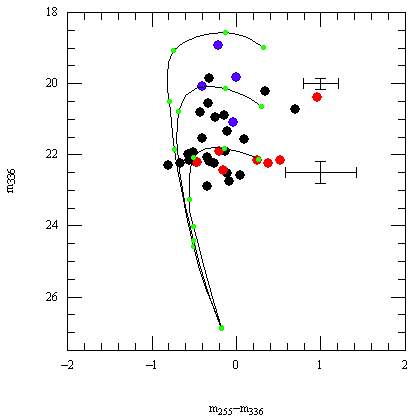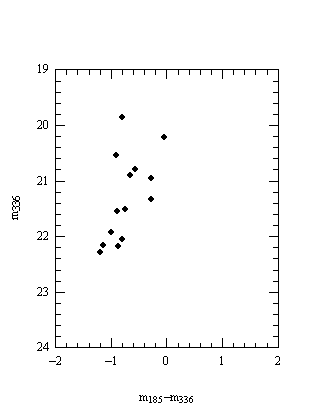
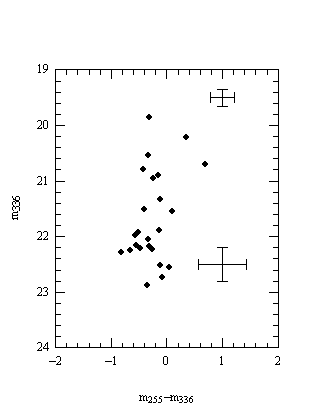
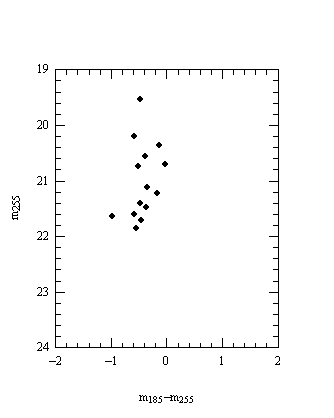
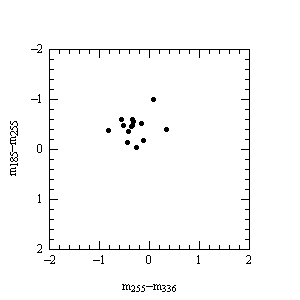
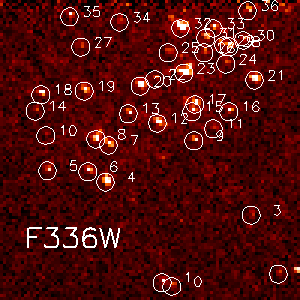
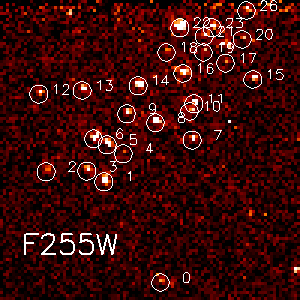
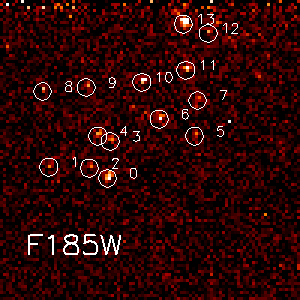
The "archipelago" region in the F336W, F255W and F185W WFPC2 frames. The objects labeled in each frame are more than 4 sigma above the background noise and are recognized by DAOPHOT as "stars".
All the diagrams below have been obtained by standard PSF fitting within the DAOPHOT package. The HST magnitude system has been used in all diagrams.




Data
file for the m255-m336 plot of the archipelago region
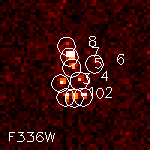
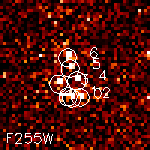
In the c-m diagram below the photometric measurements obtained from the "archipelago" region (in black) have been superimposed to the photometry of the cluster n.8 (in red).
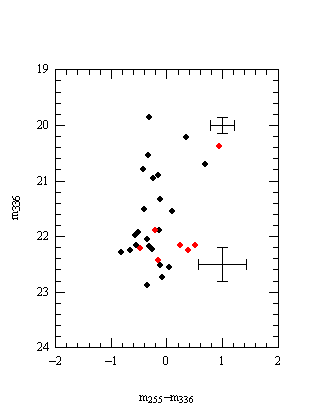
Data
file for the m255-m336 plot of the seven star of cluster n.8
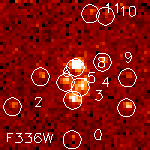
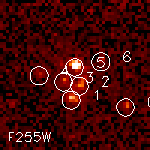
In the c-m diagram below the photometric measurements obtained from the "archipelago" region (in black) have been superimposed to the photometry of the cluster n.8 (in red) and n.1 (in blu). See the draft for details. Notice that especially in the case of the cluster n.1 there is evidence that we are still not measuring single stars, due to severe crowding even at HST resolution.
Data file for the m255-m336 plot of the four brightest star of cluster n.1
In the following figure our HST WFPC2 photometry is compared to
isocrones (Z=0.004) taken from Bertelli et al. (1994) and trasformed into
the STMAG photometric system using the spectra of Kurucz (1979). A distance
modulus m-M=24.6 (Lee 1996) has been assumed. An absorption E(B-V)=0.035
(Burstein & Heiles 1982) and the Cardelli (1989) extinction curve [Av/E(B-V)=3.2]
has been used to redden the Kurucz spectra before the convolution with
the WFPC2 filter transmissions. The three isocrones corresponds to an age
of 20, 50 and 100 Myr respectively.
